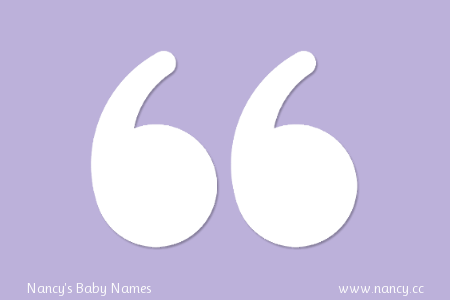
From a handwritten letter sent to Rocky Mountain National Park from “Shawn in Texas”:
My wife and I got to take our baby boy named Kenai (named after Kenai Fjords National Park) on his first National Park trip to Rocky Mountain National Park just right before the fires. This was a special trip for us seeing that this would make his first adventure before the many to come.
(The baby name Kenai has become increasingly popular recently. I don’t know what year this particular baby was born, but over 10% of the Kenais born in 2019 were also from Texas.)
From an article in the New York Post about the “Via Getty” confusion on social media:
Lefties fired up over protesters storming the US Capitol Building mistakenly believed one caught-on-camera rioter was named “Via Getty” — because of a photo credit for the media firm Getty Images.
Politico reporter Ryan Lizza had posted a photo on Twitter with the message “Via Getty, one of the rioters steals a podium from the Capitol.”
But online critics embarrassingly assumed “Via Getty” was the guy’s name — instead of attribution for one of the world’s largest visual media companies.
(Usage of the baby name Via is rising pretty swiftly right now — anyone know why? I’m stumped.)
From a New York Times article about parents looking for “positive” baby names:
Some parents-to-be have been so distracted by the pandemic that they’ve skipped the deliberation and quickly picked a name. Amanda Austin of Erie, Pa., owner of an e-commerce store specializing in dollhouse miniatures, came up with her daughter’s name on a whim. “It was in March, when the whole world was shutting down,” she said. “Covid terrified me. My husband and his dad own a construction company and Pennsylvania had banned construction work.”
The name “Annette” popped suddenly into her mind. “I shared it with my husband and he loved it,” Austin said. “His reaction is a far cry from my other daughter’s naming process, where we went back and forth for months. I think we had so much going on with the pandemic that we didn’t have the mental bandwidth to dig deeper.” The name also reminded the couple of the 1950s, a “less complicated” time.
From a 1979 People article about the “eerie similarities” between two Ohio men who discovered, at age 39, that they were twins separated at birth:
Curiously, both had been christened James by their adoptive parents [who lived 40 miles apart]. As schoolboys, both enjoyed math and carpentry — but hated spelling. Both pursued similar adult occupations: Lewis is a security guard at a steel mill, and Springer was a deputy sheriff (though he is now a clerk for a power company). Both married women named Linda, only to divorce and remarry — each a woman named Betty. Both have sons: James Alan Lewis and James Allan Springer.
From a 2017 article about the off-Broadway play They Promised Her the Moon (which tells the story of pilot Geraldyn “Jerrie” Cobb, the first American woman to test for space flight):
“I immediately fell in love with the story,” the show’s director and producer, Valentina Fratti, told Space.com. “I couldn’t believe I didn’t know about Jerrie Cobb.”
Fratti had been named for the first woman in space, Valentina Tereshkova, but hadn’t known about the “almost first,” her American counterpart.
From a 1907 article in the Deseret Evening News called “Genealogy“:
A very good guide, in the study of New England genealogy, is given by the Christian name. In some families, Simon, Stephen and Thomas may follow down the line of sons; while others carry only John, James and William. Genealogists have great confidence in this clue, for those Christian old worthies used to name their sons after themselves and their fathers. They had not evolved into the “Vernons” and “Cecils” and “Irvings” of now-a-days; these modern names which mean nothing but a morbid craving for the romantic and unusual.
From a 1964 article in the Eugene Register-Guard called “Quite a Problem, Naming the Baby“:
The American melting pot has made something of a stew of old world cultures. Isaac and Rebecca Goldberg are the parents not of Moses and Rachael, but of Donald and Marie. Hjalmar and Sigrid Johanson are the parents of Richard and Dorothy. It seems rather a shame that Axel and Jens, Helma and Ingeborg, not to mention Stanislaus and Giacomo and Pedro and Vladimir have just about disappeared. The custom seems to be for the first generation to anglicize the given name as soon as possible. The next generation or two branches out and we get Pat Johnson, even Angus Puccini. Then, after a few generations, there is a tentative reach backward for the Shawns or even the Seans. Katy’s real name may again be Caitlin, Pat’s Padriac.
Have you spotted any interesting name-related quotes/articles/blog posts lately? Let me know!


